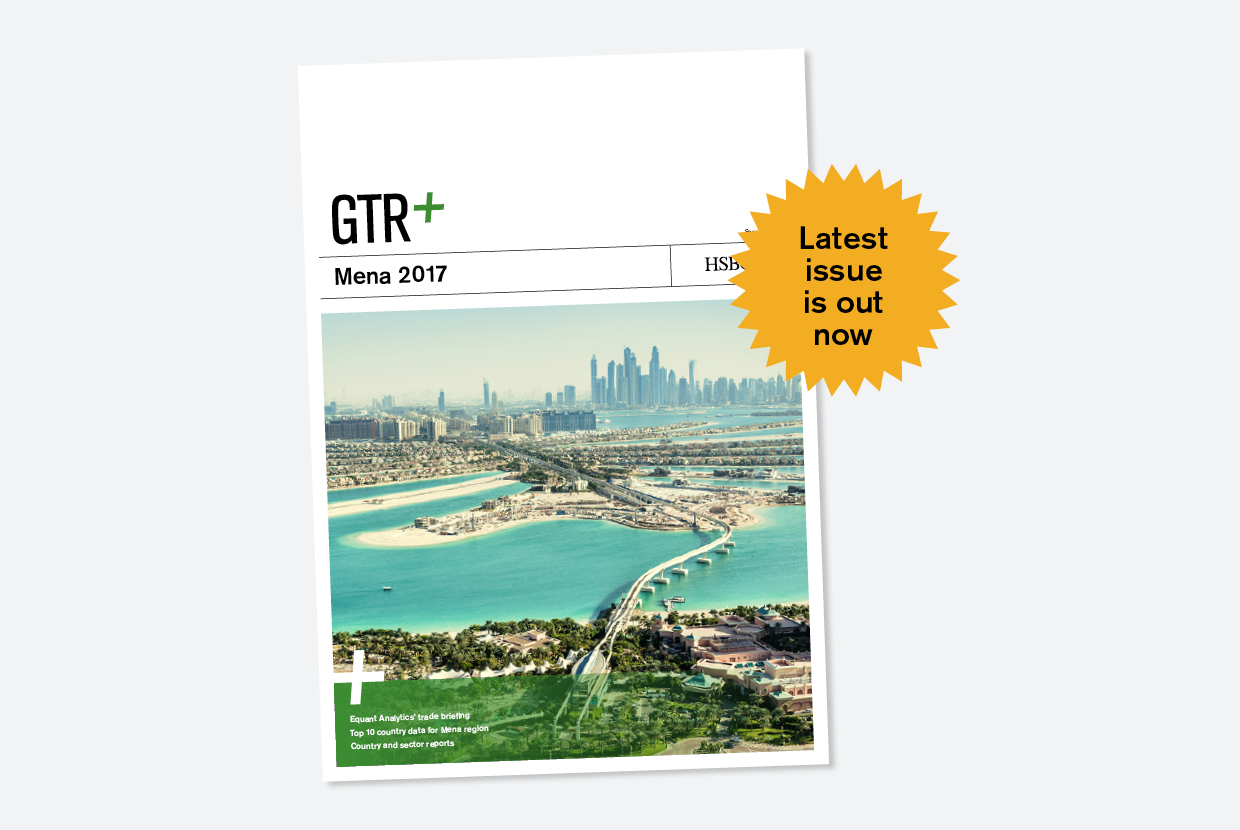While low oil prices and deepening conflicts weighed heavily on the economies of the Middle East & North Africa (Mena) in 2016, there were many significant developments within the region’s trade finance industry that provided welcome respite from the gloom.
One of the biggest news stories in Mena over the recent past has been the removal of Iran’s economic sanctions: it was certainly an eventful year for the country as it began to re-engage with the international financial system. As a result, many analysts predict that Iran will be the region’s best performer in 2017, although this forecast will likely change now that President Donald Trump is in office.
Another positive note for 2016 was Iraq’s economic rebound following the previous year’s dismal performance, when the so-called Islamic State occupied large swaths of land in the country. Among one of the deals signed in the country in 2016 was a sizeable memorandum of understanding aimed at meeting the growing demand for power in Iraq and supporting the financing of high-priority power and infrastructure contracts. According to one lender, the transaction was the largest of its kind achieved in the country.
In other news, UK prime minister Theresa May headed out to the annual Gulf Co-operation Council summit in Bahrain last year – the first woman to do so – to scope out new post-Brexit free trade deals with leaders of the Gulf countries. Also, the UAE’s first nuclear power project secured financing; the Dubai Islamic Economy Development Centre announced that it is in advanced discussions with the Central Bank of the UAE to establish the first sharia-compliant trade bank; and First Gulf Bank (FGB) and National Bank of Abu Dhabi (NBAD) announced their intention to merge and form the largest bank in the region.
So, no shortage of trade-related accolades – all covered diligently by GTR.
Where the region does slip up, however, is in the reporting of its trade data, the complexity and opaqueness of which is having a negative effect on the perception of risk in Mena. And increased risks mean increased costs and a potential decrease in trade finance activity.
In this GTR+ Mena publication, GTR, together with Equant Analytics, which specialises in macroeconomics and risk, has embarked on a project, the first of its kind, to uncover the data that exposes trade flows in and with Mena to underpin the industry’s understanding of the region.
In doing so, we provide comprehensive data, supplemented with multi-sourced commentary on key themes in accompanying country and sector-specific reports. We also include a handy “top 10 country data” appendix, which we believe will be of interest to all trade finance players operating in the region.
We trust that this – and the remainder of our new suite of GTR+ publications – will be a practical tool for our readers.
In this issue:
- Equant Analytics Trade Briefing
- Missing trade: what does it mean for the region?
- Mena’s pivot to the East
- Mena economies struggle to emulate UAE diversification success
- Saudi Arabia: This time it’s real
- Equant Analytics Country Data: Top 10 – access these with our magazine app.






